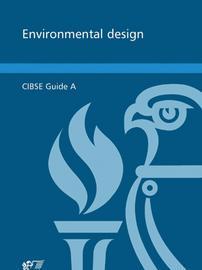The new, seventh edition of CIBSE’s Guide A: Environmental design contains significant changes.
Not only are the design updates required by the Energy Performance of Buildings Directive and the 2006 Building Regulations Approved Documents Parts L and F included, but so are new guidelines on maximum workplace temperatures and how to calculate them.
The new Guide A is one of the core guides which will be distributed in June as a benefit of membership to non-retired Associates, Members and Fellows who have paid their annual subscriptions for 2006.
Climate information
The UK dry bulb and wet bulb temperature data now covers the past two decades (ie 1983 to 2002) and four more locations: they now cover Belfast, Birmingham, Cardiff, Edinburgh, Glasgow, Manchester, Plymouth and Heathrow.
Standards
The information on thermal conductivity has been reviewed and updated to reflect the changes in British and European standards – in particular, the standards specifying test methods, and for hot box determination of the thermal transmittance of building elements.
Ventilation
Now covering all modes of ventilation, this guide specifies minimum ventilation rates to conform to both the revised Approved Document Part F in the Building Regulations and the ventilation requirements specified in the new European Standards. A new chapter with comprehensive data on empirical data for air infiltration gives design and peak annual average infiltration values for a range of building types and sizes.
Heat gains and moisture transfer
The latest design information on heat emissions from a wide range of internal heat gains has been collated to enable designers to use either benchmark values typical of the building and its intended usage, or to make specific estimates where sufficient reliable data are available.
Information has also been introduced on prediction of surface and interstitial condensation and on how to minimise these problems.The latest British and European Standards methodology and national best practice are also covered in this section revision.
A totally new section has been introduced on health issues to inform building services designers and managers and give recommendations for limiting, or preferably avoiding, any adverse health interactions. A synopsis is presented in the printed guide, with the full information available on the accompanying CD. Additionally, a web-based version of the unabridged section is being published as TM 40 Health in buildings, which is available to members free on the CIBSE website www.cibse.org.
Source
Building Sustainable Design
Postscript
If you are an non-retired Associate, Member or Fellow and have paid your subscription, you will receive your copy of Guide A in June; if not, please order your copy by calling Charmaine McFarlane on 020 8772 3618 or by visiting www.cibse.org. The guide costs £25 for CIBSE members and £106 for non-members.























No comments yet